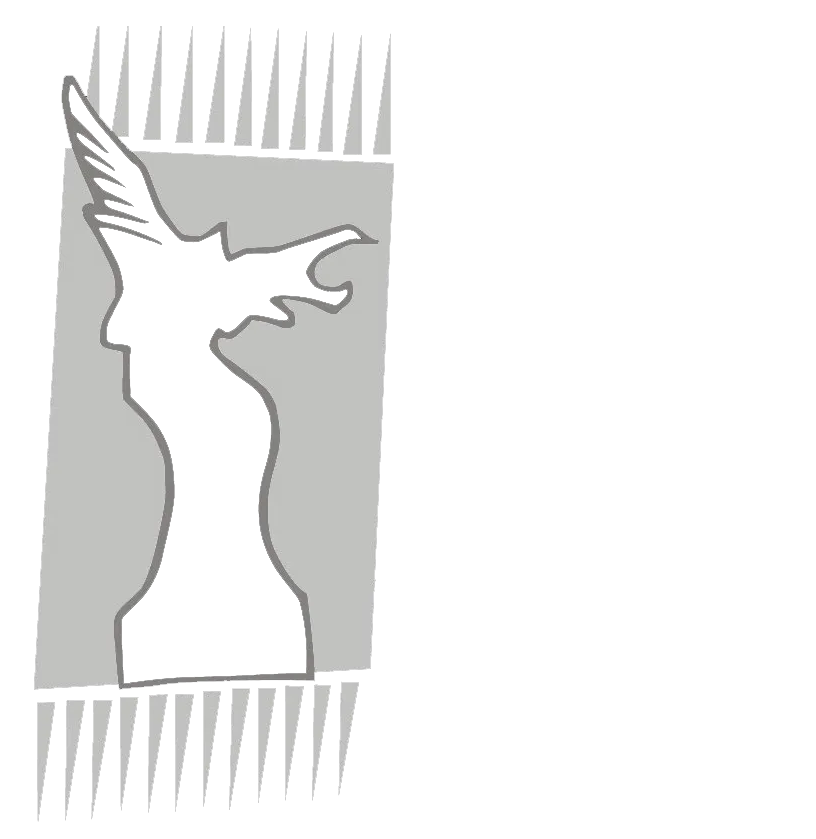
KINTSUGI
Healing Through Japanese Art
Solo Exhibition by Artist Mami Takahashi
Presented by the Japanese Arts Foundation
Hosted at the International Museum of Surgical Science
September 30, 2022 – March 12, 2023
Mami Takahashi. Kintsugi Skull 01, 2022. Resin replica skull, gofun (oyster powder), gold leaf, and gold powder. w 4 1/2″ x h 6″ x d 7″
Mami Takahashi. Kintsugi Skull 02, 2022. Resin replica skull, gofun (oyster powder), gold leaf, and gold powder. w 4 1/2″ x h 6″ x d 7″
The Japanese Arts Foundation (JAF), in partnership with the International Museum of Surgical Science (IMSS), proudly presents the exhibition, “Kintsugi: Healing through Japanese Art,” a solo exhibition by Japanese artist Mami Takahashi. This six-month-long exhibition will run from September 30, 2022, through March 12, 2023. Conceptualized by JAF Executive Director Saira Chambers and created by JAF resident artist Mami Takahashi, this exhibition draws upon the traditional Japanese art of kintsugi, or ‘gold repair,’ that has been practiced to repair ceramics throughout Japanese history. This exhibition includes hand-made paper works, sculptures, paintings, and a community gallery, all surrounding the idea and practice of kintsugi in relation to the human body. As gold is used to repair broken ceramics in kintsugi, highlighting the break rather than erasing it, the artist invites us to reflect on how this translates to the human process of overcoming trauma and loss, particularly in our shared moment of the COVID-19 pandemic. Kintsugi is not only a practice but also a belief, in that the break itself makes the ceramic more valuable and treasured. Takahashi applies kintsugi not to pottery, but to our lived spaces and beings. Through these works, we see a correlation between our own humanity and our shared healing process, and visitors are asked to view their trauma and “breaks” in a similar light. As we approach closer to the other side of the COVID-19 pandemic, this exhibition encourages our broader, and new, community to come together and heal through Japanese art.
More about the exhibition:
Exploring the exhibition concept created by curator Saira Chambers, artist Mami Takahashi draws upon the International Museum of Surgical Science’s collection of human skulls that have undergone the ancient surgery of trephining. Throughout history, trephining has been used as a practice of surgery to treat illness. Trephining is the practice of drilling or boring a hole in the skull to relieve pressure on the brain or release sickly spirits trapped inside the body. The practice was greatly successful in ancient times, with a success rate of over 80%. The evidence is shown on the skulls themselves, where the bone starts to grow back and close the trephined hole. Some skulls show multiple trephine holes, providing evidence that patients lived long enough after one procedure to have a second and a third.
By recalling the remarkable endurance of those who lived through this ancient surgery, Takahashi fills the cracks and holes on recreated skulls using the kintsugi practice. Kintsugi is a traditional art practiced in Asia where broken objects, typically ceramics, are repaired with lacquer and then dusted or mixed with gold leaf to create a striking gold seam on an otherwise austere ceramicware. Traditional kintsugi uses adhesive sap extracted from a lacquer tree (urushi) to piece the broken pieces together. The artist brings to the forefront that many of these individuals survived the trauma of this surgery and lived many years after the incident. Takahashi covers the faux bone with gofun, a pigment made from shells consisting primarily of calcium carbonate, a traditional material used to color faces in Japanese paintings and in dolls, recreating a life-like glow. In addition to the kintsugi skulls, Takahashi creates life-size paper works using silver leaf on Japanese thin paper, book art containing Japanese death poems, and an immersive kintsugi wall drawing using gold powder with nikawa pigment. The traditional Japanese material nikawa (or animal glue) is a binder made by boiling the skins and bones of animals, such as deer and fish, into liquid and then cooling them down to a gelatin form before drying them for easier storage.
The exhibition features a Community Gallery, highlighting Takahashi’s engagement with the community through “Kintsugi Memory” workshops and public art installations throughout Chicago neighborhoods. The Memory workshops hosted at the International Museum of Surgical Science and the Japanese Culture Center are led by Mami Takahashi and invite members of the community to come together and create Japanese-style collages brought together through the art of kintsugi. Workshop attendees bring photos, letters, and other memorabilia from someone or something lost, and process healing through loss. Select collages are on loan to be displayed in the Community Gallery.
Community Kintsugi Memory Workshops led by artist Mami Takahashi. 2022.
Also on view in the Community Gallery is video and photo documentation of Mami Takahashi’s public art installations throughout Chicago, led by Saira Chambers of the Japanese Arts Foundation and supported by the Chicago Park District. These “Kintsugi Sidewalks” highlight the broken pieces in our shared spaces by filling the cracks with gold. Community members are involved in the installation and enjoy the public art for years to come. We can only speculate on the unique history of these sites that generations of communities have stood on contributing to these cracks, and celebrate each experience on these sites through this project. A map of each location is highlighted for visitors to travel to each site.
Mami Takahashi. Kintsugi Sidewalks. 2022
About the Artist:
Mami Takahashi is a multidisciplinary artist from Tokyo, currently residing in two cities–Portland, Oregon, and Chicago, IL. Using photography, performance, installation, and urban intervention, her practice explores the complexities of being Asian and a woman living outside of her home country.
Previous exhibitions and performances have taken place at Portland Institute for Contemporary Art, Portland, OR; San Francisco Art Institute, San Francisco; DANK Haus, Chicago, IL; The International Museum of Art, El Paso, TX; Southern Alberta Art Gallery, Alberta, Canada; Gwangju Folk Art Museum, Gwangju, Korea; Instituto Municipal del Arte la Cultura, DG Mexico and Toriizaka Art Gallery, Tokyo, among other venues. She holds an MFA from Portland State University and a BFA from Joshibi University of Art and Design, Kanagawa. Takahashi is a recipient of the Ford Family Award for the residency program at the Massachusetts Museum of Contemporary Art.
Mami Takahashi
About the Curator:
Saira Chambers is the Director of the Chicago Japanese Culture Center and Executive Director of the Japanese Arts Foundation. In addition to these roles, Saira is a curator, educator, event producer, and curriculum developer. She has worked with and maintained strong partnerships with the Hiroshima Peace Institute and Peace Memorial Museum, the Wing Luke Museum, the Seattle Asian Art Museum, the Art Institute of Chicago, the Field Museum, DePaul University, and many other arts and community organizations. With an emphasis on community-driven and innovative exhibition models and programs, her work explores the art, history, and culture of Japan globally to bridge cultural competence and cross-cultural perspectives.
Saira Chambers
About the Contemporary Arts Program: The International Museum of Surgical Science supports a commitment to contemporary art and artists through exhibitions and programs that use the frame of contemporary artistic practice to examine new perspectives in medical-surgical science and our relationship to the body. The Museum’s Contemporary Arts Initiative includes rotating exhibitions of contemporary art, as well as an ongoing Artist in Residence program.
Thank you to our exhibition supporters!
The Japanese Culture Center
Suntory
The Oregon Arts Commission
The Illinois Arts Council Agency
City of Chicago DCASE
About the JAF:
The Japanese Arts Foundation is a registered 501(c)(3) nonprofit organization that creates inclusive and equitable opportunity, education, and support of Japanese arts thriving in Chicago’s diverse community and beyond. The JAF celebrates the multitude of voices in our community exploring and expanding Japanese arts and culture.
The JAF supports this mission by hosting unique programs and open educational opportunities that share Japanese art equitably and accessibly, while highlighting our diverse community of artists, thinkers, and makers.















